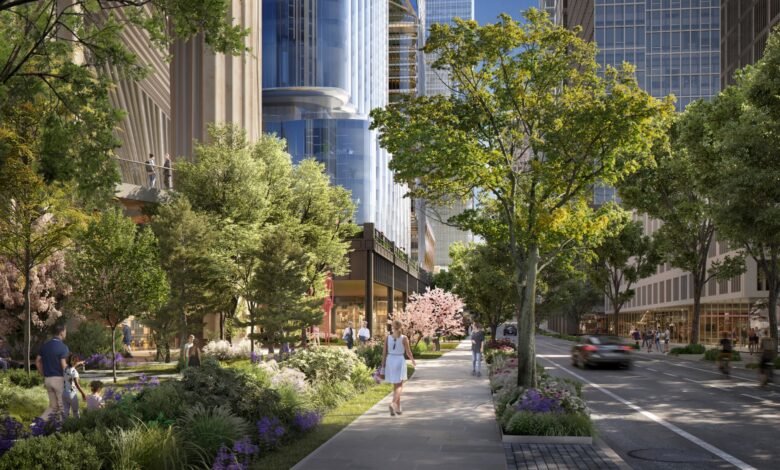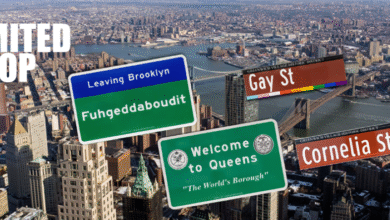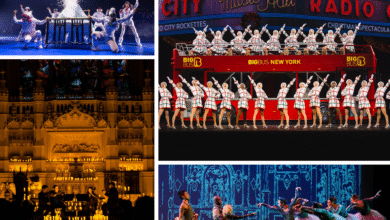City Council approves Related’s Hudson Yards West plan for 4,000 apartments and no casino


Rendering courtesy of Related Companies and Wynn Resorts
The New York City Council on Wednesday voted to approve zoning changes to allow for thousands of new apartments, but not a casino, on the undeveloped section of Hudson Yards. Related Companies’ Hudson Yards West proposal includes four mixed-use towers, nearly seven acres of public green space, and 4,000 apartments. The original plan called for a casino run by Wynn Resorts, but Related scratched the gaming facility from the project last month amid strong opposition from community members and officials.

The land use action modifies the 2009 rezoning of the Western Rail Yards, which had called for 5,000 apartments and 5.45 acres of open space. The new plan will feature 4,000 units, with 25 percent of them designated permanently affordable, more than what the 2009 plan included, and 6.6 acres of open space, a new public school, daycare facilities, and other amenities.
The council approval comes a day after Mayor Eric Adams announced a tentative deal with Related to increase the minimum number of affordable housing apartments to 625 units, up from 400. According to the mayor, the agreement also includes another 139 existing units “nearby” that will be preserved as permanently affordable, as 6sqft previously reported.
Council Member Erik Bottcher, who represents the neighborhood, said the rezoning will transform the open rail tracks into the “vibrant neighborhood Hudson Yards was meant to be: full of life, energy, and opportunity, day and night.”
“This action will bring up to 4,000 new homes to the site — one of the most significant expansions of Manhattan’s housing stock in a generation,” Bottcher said. “And in a city where the housing crisis is displacing longtime residents of every neighborhood in every borough, this kind of housing production is exactly what we need. We cannot fight displacement and bring down rents if we’re not building more housing.”
Bottcher added: “This plan no longer includes a casino, but it remains a once-in-a-generation opportunity to deliver the housing, school seats, open space, and opportunity that New Yorkers urgently need.”
Plans for the project were first filed in February 2024 and included the construction of three new skyscrapers, including an 80-story residential building with 1,500 apartments (324 of which would be affordable), a 2.2 million-square-foot office tower, and a gaming facility and hotel run by Wynn. All would be built atop the neighborhood’s undeveloped western rail yards.
The initial proposal received intense backlash from locals and elected officials. Earlier this year, Manhattan Community Board 4 voted to reject the proposed casino complex, and Manhattan Borough President Mark Levine rejected the proposal, claiming the plan “does not achieve its full housing potential,” according to DCP records.
Friends of the High Line also campaigned against the plan, fearing the development would block sightlines from the elevated walkway.
In April, Related announced plans to replace a 1,400-foot-tall office tower with two residential buildings, boosting the projected housing from 1,500 units to 4,000 total. This change aimed to address critics of the developer’s efforts to change the terms of a 2009 zoning, which originally called for 5,000 new homes on the site.
Shortly after Bottcher announced he would not support the casino component, an agreement was reached with Related to proceed with a development excluding the casino and instead adding thousands of new homes.
On May 20, Related officially announced it had dropped the casino from its proposal and would no longer pursue one of New York’s coveted downstate gaming licenses. The developer also announced it would reduce the height of the tower’s podiums, satisfying High Line advocates, as reported by Crain’s.
As part of its revised, casino-free plan, the developer expanded the proposed “Hudson Green” park from 5.6 to 6.6 acres. Comparable in size to Bryant Park and designed by Hollander Design and Sasaki, the park would offer sweeping views of the Hudson River, with open lawns, landscaped gardens, playscapes, and groves forming a seamless connection along the site’s western edge.
The approval also authorizes Related’s use of payments in lieu of taxes (PILOTs), a financing structure that redirects the developer’s property tax payments to help fund the construction. The funding model mirrors the one used for the first phase of Hudson Yards.
RELATED:




